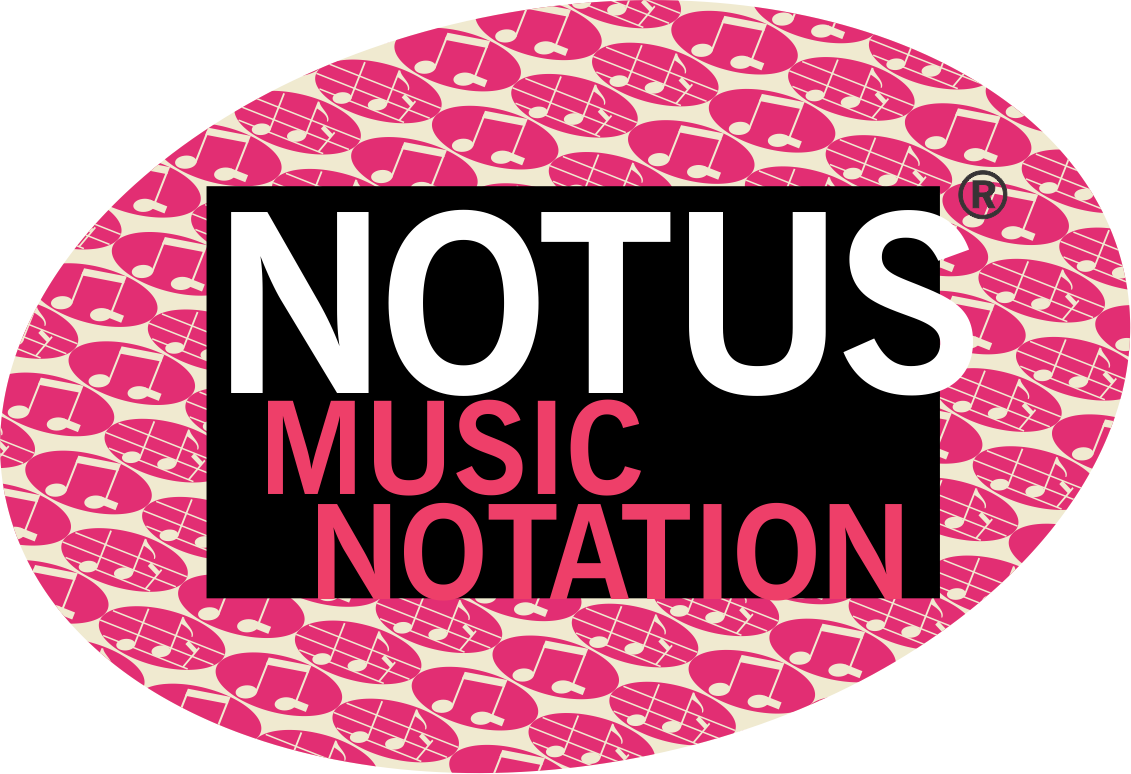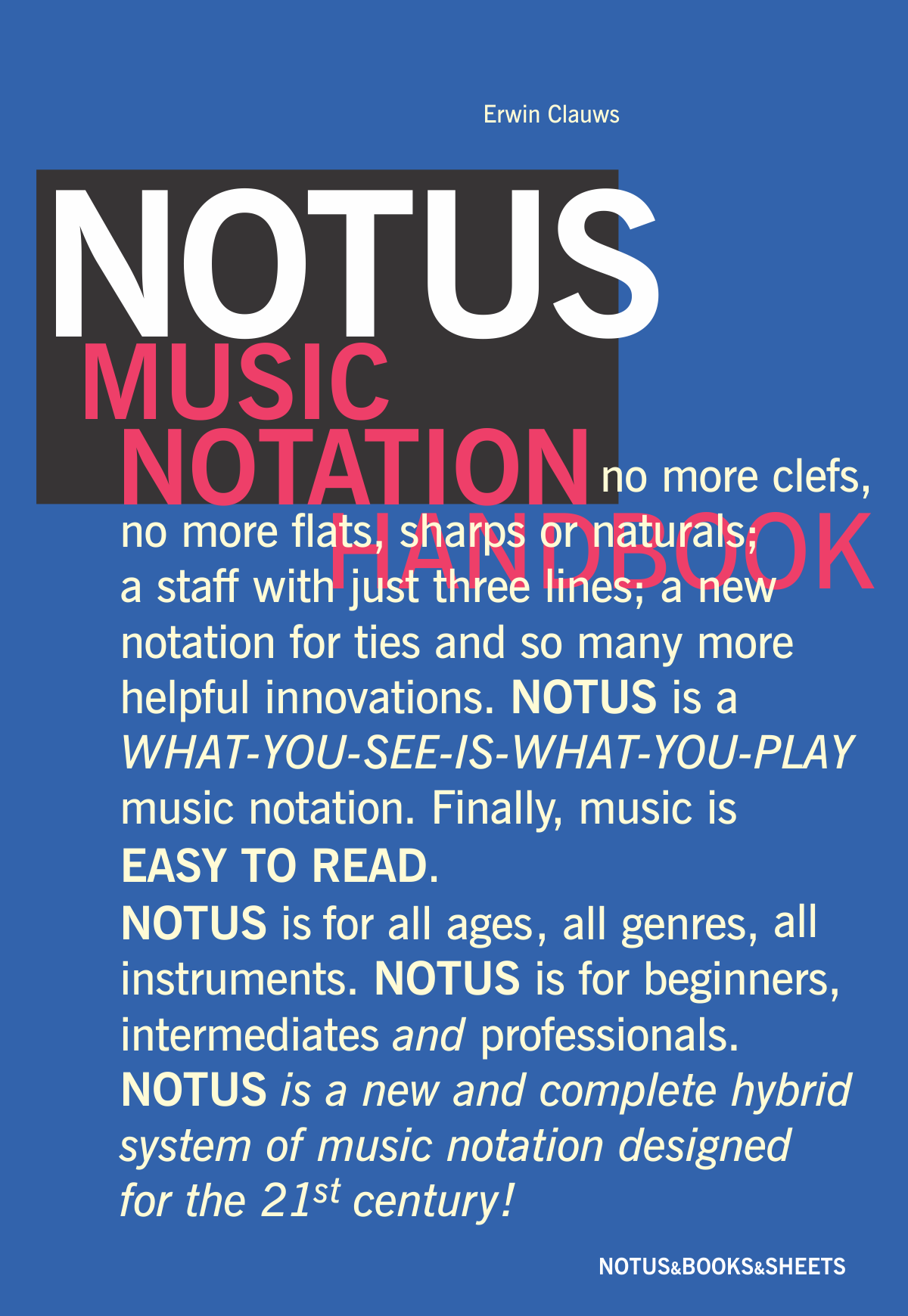Erwin CLAUWS
HANDBOOK
NOTUS Music Notation
€12.00
ONLY AVAILABLE as PDF – READ Only – immediate ‘one-time download’ after payment.
The NOTUS HANDBOOK is the NOTUS bible, describing in detail all the innovations and corrections with regard to conventional music notation.
See Description for further information and the sample pages that also contain the full table of contents.
The NOTUS HANDBOOK is the NOTUS bible, describing in detail all the innovations and corrections with regard to conventional music notation. The end goal of all these changes has always been to offer a much easier and quicker to learn music notation. In each case, the ‘why’ of the innovation or correction is explained, accompanied by a clarification of the weaknesses of conventional music notation in terms of uniformity, clarity and their negative influence on music pedagogy and didactics.
Then, of course, follow the explanation of which correction/innovation NOTUS has been applied, how it is applied, and how the weaknesses of conventional notation are thus overcome. All these questions and answers are accompanied by clear comparative diagrams and small practical examples of the notations and their new NOTUS solutions.
Scattered throughout the chapters are eight transcriptions of scores for piano, solo cello, saxophone quartet and guitar, ranging from simple to more complex (even contemporary). These examples always include the conventional score as well as the NOTUS score on the adjacent page to facilitate comparison.
Here we would like to note, for the sake of clarity, that the NOTUS HANDBOOK is not a course for learning any kind of instrument or a course in music theory. Although the latter is addressed in five Appendices, these Appendices serve only to demonstrate that NOTUS is 100% embedded in existing general music theory. It is only the approach and practical examples that change when music theory is clarified using NOTUS.
The contents of the handbook are divided into four parts and seven appendices. The first part describes the historical-philosophical context of the need for innovation and the place and importance of contemporary visual communication in music notation. After this important introductory section, all the changes NOTUS makes to conventional notation are described in detail over three major sections.
PART A
Part A describes the new way of constructing the NOTUS stave using the octave anchor and octave segments. Also covered described in this section are some changes with regard to note and rest signs, the NOTUS tie and the simple new way to notate semitones and keys. This section is concluded with an overview of the NOTUS key signature.
PART B
Part B first describes all the new repeat signs in NOTUS, which are divided into two groups: immediate and delayed repeats. This is followed by the notation of tuplets, a new family of fermatas, a new way of notating tremolo and vibrato, and some minor changes with respect to dynamics and articulation marks.
PART C
Part C describes the unified notation of harmonics for all instruments capable of producing harmonics, some new signs for glissando, and new signs for muting, dampening, and stopping instruments. Part C also contains a chapter on using the new NOTUS interval legend for transposing. Part C concludes with the notation of quarter and three-quarter tones.
SEVEN APPENDICES
Finally there are seven appendices: five covering music theory clarified using NOTUS Music Notation, an appendix on the use of typography in NOTUS, and an appendix with instructions and blank staves for handwritten NOTUS notation.
At the end of the book is a list of all the new signs, the bibliography, and the index.
VIEW A SELECTION OF PAGES HERE (included contents)
NOTUS HANDBOOK – 2nd edition – PDF version
– contains 264 pages
– size: 20 x 29 cm
– full color
– illustrated with hundreds of diagrams and eight score transcriptions of varying length and difficulty for the following instrumentations: solo cello, solo guitar, solo piano and saxophone quartet.
The PDF version can only be used on a desktop computer and tablet, printing is not possible.
DOWNLOAD PDF Version:
After payment you will immediately be able to download the PDF file from the NOTUS site via the confirmation page. We also send you an email with the download link. Remember that you can use only one of those two possibilities to downlaod your pdf file because the link is a one-time download link.
This means that you can only download your purchased version once. After download, the download link will expire. So keep your purchase in an easily accessible and safe place on your computer or tablet. We use this way of download to prevent piracy of our copyrighted NOTUS publications as much as possible.
COPYRIGHT
NOTUS Music Notation © 2016, Erwin Clauws / NOTUS Music Notation is a registered trademark.
Author/editor NOTUS HANDBOOK Music notation: © 2018-2021, Erwin Clauws
Cover, layout, diagrams and NOTUS Sheet music © 2018-2021 — Erwin Clauws, NOTUS&BOOKS&SHEETS.
No part of this publication may be distributed or used commercially in any way (hardcopy, digital copy, internet) without prior permission from the author and publisher.


